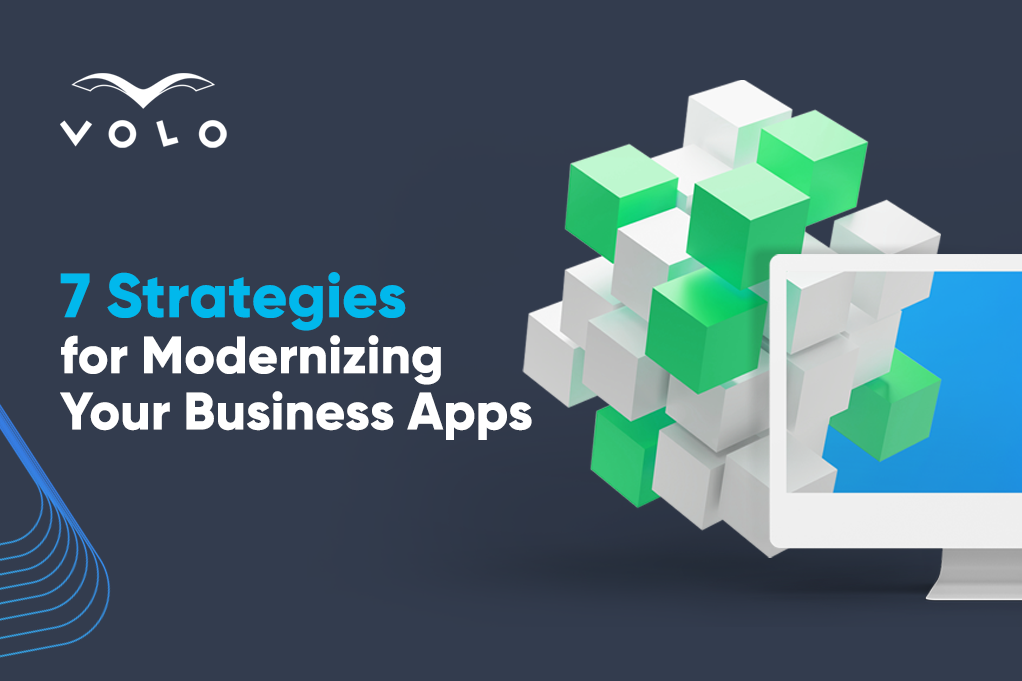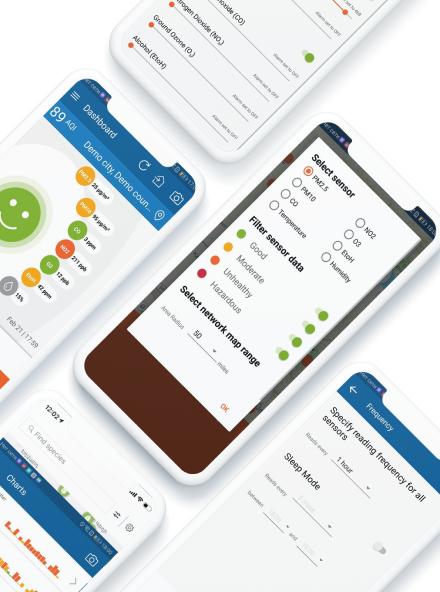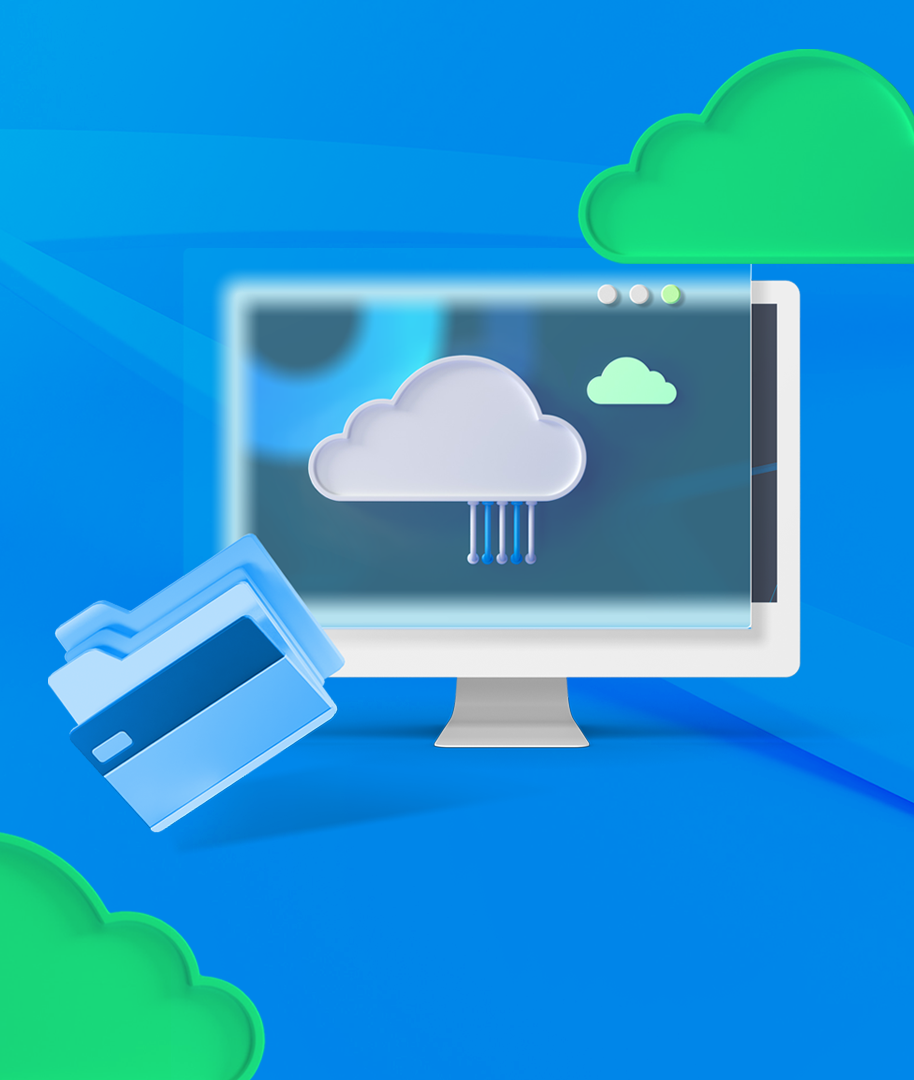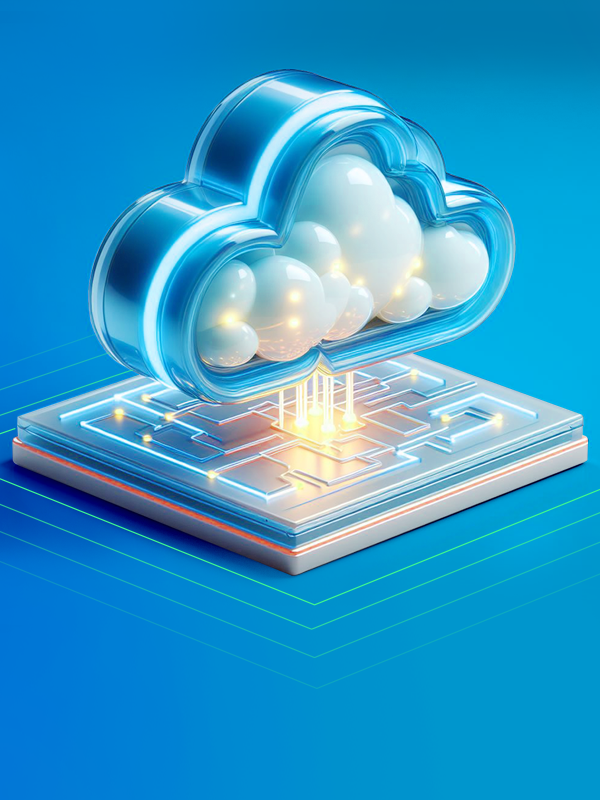
7 Strategies of Application Modernization for Your Business
19 Oct 2024

“Age is just a number” was not spoken of legacy software. As a matter of fact, age is what defines the life in your legacy systems. Over time, they become slow, inefficient, expensive, and even fragile in terms of security. Meanwhile, new and more innovative technologies emerge offering better features and functionalities that can highly boost the productivity and efficiency of your business operations and improve your ROI.
That’s why, to stay in the market you need application modernization using the innovations that modern technology offers.
What is Application Modernization?
Application modernization entails the updating or upgrading of older software development solutions by implementing new computing approaches, technologies, languages, frameworks, and infrastructure platforms to increase the efficiency, security, and interoperability of your software as well as to streamline business operations and improve customer experience.
How to Modernize Your Legacy Systems?
Legacy system modernization is quite a complex process that requires finances, time, effort, and a thorough assessment of your current software, its functions within your business, as well as your short- and long-term goals.
If this is something new to you and your tech team doesn’t have the time to focus on it, it’s highly recommended to find a reliable software partner who will help you wet your feet in the whole legacy app modernization process. Unless done professionally and in a timely manner, you might be putting your business at risk of losing a significant amount of its funds, time, and ultimately, clients. Keep in mind that legacy system modernization is a rewarding investment and should never be anything else.
Gartner’s 7 Strategies of Legacy App Modernization
There are different approaches to app modernization that vary from company to company. We prefer the research giant Gartner’s 7 approaches to giving legacy software an upgrade:
1. Encapsulate
2. Rehost
3. Replatform
4. Refactor
5. Rearchitect
6. Rebuild
7. Replace
The biggest challenge you need to handle is understanding which of these options would be the right choice for your business and would have your legacy modernization needs covered with minimum risk. Sounds quite complicated but worry not, we will come back to this in a short while with some helpful tips. Before that, let’s have a closer look at the 7 main approaches of legacy app modernization.
1. Encapsulate
In terms of complexity, encapsulation is one of the easiest and simplest legacy app modernization approaches out there. With this strategy, you basically break the legacy code down into pieces saving most of your old code and all your data. What changes is the monolithic architecture that is now functioning in separate segments. Each of these segments are independent and use APIs to communicate with one another. The good news is that you end up with a system that works much more efficiently than before.
Besides, through encapsulation, your tech team will be able to fix issues much easier and faster, allowing the rest of your employees to work with the app’s segments which are unaffected by the given problem.
Additionally, no new bugs will come up which is sometimes the case when you add new features and functionalities to an existing application. And lastly, since there is close to no risk of losing customer data, this legacy app upgrading technique does not affect customer experience that much.
2. Rehost
Choosing this method of application modernization, you agree to move your existing software to a new infrastructure with no (or very few) modifications of the code, features, or functionalities. The new environment can be either physical, virtual, or cloud.
Rehosting is yet another quick and low-risk way of updating your legacy software. Through rehosting, your business will not undergo changes or end up with unexpected “side effects” since the system operations will not be put on halt for long periods.
Choosing where to rehost your legacy software largely depends on the software itself - its features, demands, and functionalities. An enterprise demanding high-security operations would need a partner that offers security according to the best standards: this could be a cloud partner or a physical server, such as AWS, Azure, or Google Cloud.
The main drawback of rehosting is the preservation of the old code. It is not eliminated during the process and can cause bugs and breakdowns.
3. Replatform
Through replatforming, you migrate your legacy software to a new runtime platform making only a few changes to the code. The code structure, features, and functionalities do not undergo modifications. This means that for the end-user there won’t be much new to learn and adapt to. The only change will be in the application performance: faster, easier to update or repair, and more efficient.
Note: Since the larger portion of the old code is saved, the need for changes or updates may arise every now and then. And despite the improved security of your software and the new operating system, most of your tech debt will still be there.
4. Refactor
Refactoring refers to the restructuring and optimization of an existing code without making any modifications to the code’s external behavior, i.e. to the front end.
Your tech team leaves the good parts of your code intact and removes the ones that are dysfunctional, adding new features and functionalities if needed.
Since your code undergoes fundamental changes which can affect the whole system, you should make sure your tech specialists are professional enough to handle this whole process carefully with regular code compatibility checks.
The good news is that if done properly, refactoring will release you from tech debt, streamlining your business app operations and allowing you to upgrade and innovate further.
5. Rearchitect
Rearchitecting is a more complex strategy of legacy app modernization since it presupposes the close to complete modification of your code in order to shift to a new application architecture with better features and capabilities.
If you go for this approach, you might as well take a step forward and invest in one of the current trends - the microservices architecture which brings to the table such benefits as enhanced agility, faster integration with new partners, and easier designing, debugging, updating, and leveraging of third-party codes.
According to the International Data Corporation (IDC), the so-called “hyper-agile apps”, built through the microservices architecture, are the future of software development. Such apps can be continuously updated with the ability to leverage cloud-native technologies such as serverless computing and containers.
The idea behind the microservices architecture is the creation of your business application in separate parts instead of the traditional monolithic model. Your tech team will deploy each part of the app individually which will be connected through APIs.
If your system or business app is large and complex then this method might be the right choice for you. Around 81.5% of companies have already successfully invested in microservices and the number is on the rise.
6. Rebuild
Rebuilding or redesigning is done through rewriting the application components from scratch. The scope and specifications of the app stay untouched.
In other words, you will have a brand-new back end, while the front end won’t be changed much other than a few cosmetic touches. The best thing about this approach is that you won’t have anything left from the old code which releases your tech team from maintenance issues that arise with outdated software codes. In addition, your app will not cause compatibility problems with your hardware or other apps in your tech stack.
The thing with rebuilding is that you need to give it time. Your tech specialists will need your patience while they are testing the basically new software for bugs. The testing process may slow down your operations for a while but the end software will definitely be worth the effort, provided you and your tech team have done a good job in your legacy transformation.
Rebuilding can come in handy if your legacy software maintenance costs you more than having the whole system’s back end written from scratch.
7. Replace
Ultimately, you can also throw your legacy software away and replace it with a new one. In this scenario, you can’t use your existing business logic but a certain amount of re-engineering and customization is possible.
The hardest part about the replacing method is the data transfer to the new system. You have to be really careful in this process in order not to lose valuable data because of incompatible applications giving you a hard time.
You should go for this approach only when there is simply no other way to handle your legacy software and maintaining it has become a pain because of staff or hardware limitations.
Old Ideas, New Packaging
As we have already established by now, for legacy software, if not a replacement, at least some fresh touches are always a good idea. Though the above-listed approaches pretty much sum up all the possible paths you could take to have your old software modernized, a few new ways of grouping these approaches have emerged recently:
- Rip & Replace
- Lift & Shift
- Move & Improve
While there is not any significant difference between the essence of these strategies and those we discussed above, we consider it important to elaborate on them too, to avoid confusion.
Many business owners unfamiliar with these terms, may find themselves overwhelmed with the abundance of app modernization techniques and approaches that they stumble upon while researching. That’s why a quick clarification could go a long way.
Rip & Replace
As the name already suggests, this approach refers to the replacement of a legacy system by a modern, flexible, and responsive one. The main difference is the name that has been spiced up a bit.
Perhaps, what we can add here is that when choosing this method, your decision should be, first and foremost, business-driven, and only then technology-driven. If your goal is just to innovate and use some better-functioning technology without calculating the risks involved in the process from the business perspective, you might as well stop there to avoid failure.
Pretty much all legacy systems are involved in the realization of multiple complex business processes. Hence, before thinking of ripping and replacing these systems, you have to be sure that such a change will improve your business functionally.
Keep in mind that replacing is often the last option for business owners to resort to because there is simply no other modernization approach that could save the situation.
Ask yourself:
- What are the issues and problems that your legacy application is causing?
- What issues will possibly arise with a new or modernized application?
- How much time and investment will you need to build the new app and have it running smoothly with those issues?
- After all these calculations, is the legacy software still more costly?
Make sure to have a reliable software partner to guide you in this process.
Lift & Shift
This approach refers to the modification of an application’s source code to have it run on a different platform. Usually, it implies cloud consulting and transformation. We can say that lift and shift is an umbrella term for the rehosting and refactoring approaches.
Move & Improve
Move and improve is a relatively new term in the area of app modernization. It’s based on the idea that mainframe applications can operate without many drastic changes and with incremental improvements.
These improvements are done through a binary-compatible environment that enables the migration of the app to a Linux environment. From here the tech team proceeds to the “improve” part of the process. As a result, you get the best of the two worlds without compromising data and business processes.
Cloud Transformation: A Quick Overview
We have already mentioned cloud transformation when talking about rehosting and the lift & shift approaches. However, it deserves a bit more credit.
Did you know that…
- The cloud computing market value is predicted to be around $1 trillion by 2028.
- A business’ total cost of ownership can be cut by nearly 40% if migrated to the public cloud.
- More than 90% of organizations worldwide, specifically enterprises, carry out at least a part of their operations in the cloud.
- 48% of companies are looking into the possibility of migrating half of their apps to the cloud this year; and at least 20% plan to move all their applications to a form of cloud.
In case you are not familiar with the term, cloud transformation refers to the transferring of your business to the cloud, whether it is your apps, software programs, desktops, data, or your whole infrastructure.
Cloud transformation is sometimes used interchangeably with cloud migration. However, there is a slight difference between these two terms. Cloud migration is the particular process of moving data from a local server to the cloud. Cloud migration itself is a step in cloud transformation which encompasses much more than the former.
When talking about cloud transformation, we imply the complex process of modernization and optimization of a business’ data management, analytics, and security in alignment with the organization’s digital transformation goals.
Types of Cloud Transformation
There are three main types of cloud transformation to choose from:
- Private Cloud: As the name suggests, private cloud transformation involves moving your business data and applications to a private cloud. The latter gives you the privilege of total control over your data by keeping it in your network. The only drawback here is that the entire infrastructure maintenance is your responsibility.
- Public Cloud: Businesses on a tight budget or those who don’t want to have to deal with infrastructure maintenance issues can move their data and applications to a public cloud. Besides, public clouds come with easy up- and downscaling features which is great for prototyping or testing new apps. In this case, though, you won’t have much control over your data.
- Hybrid Cloud: A combination of private and public clouds, hybrid cloud transformation gives you just enough data control, scalability, and affordability to boot.
How to Choose the Right Cloud Service Provider?
There are some important criteria that will help you land the best cloud service provider for your business. We picked out the main ones below:
- Your provider’s technologies and platform should be compatible with your business’ environment and objectives concerning cloud transformation.
- Go with a provider who gives you enough control over your data and a choice regarding data storage, processing, and management.
- The importance of security cannot be stressed enough. Choose a provider who offers services according to the highest security standards. If you find it hard to choose a cloud services provider in terms of security, you can hire a reliable consultant who will guide you in the right direction.
- Your provider should be able to give you a performance record, at least of the past year.
- A good service provider will have a solid crisis management system in place so as to painlessly handle force majeure situations and ensure the safety of your data and apps.
- A point of paramount importance is the confidence in your provider to give you the minimum amount of worry, in case you want to switch to another provider. Check this in advance.
What are the Benefits of Cloud Transformation?
If you are still wondering why you should go through all the fuss of cloud transformation, we got some serious reasons to back up our recommendation to do so (in case, the numbers above did not speak for themselves already):
- Enhanced Efficiency: With the simplification to data access comes a chain of benefits such as real-time seamless collaboration, elimination of data silos, and enhanced data analytics. Not to mention the unnecessary infrastructure maintenance load that is lifted off the shoulders of your staff allowing them to focus on more important tasks.
- Lowered Overhead Costs: By migrating to the cloud, your business will see three times more ROI as compared to the on-premises working. Additionally, you will not need to hire more tech specialists in order to manage your cloud infrastructure which is usually what the management of an on-premises IT system requires.
- Improved Data Security: On-premises data is more vulnerable to cyber attacks than data stored in the cloud because the latter ensures encryption and other required layers of security which add additional protection to the data. Not to mention the back-up possibility which highly reduces the risk of data loss in case of system failures.
- Easy to Scale up and down: Cloud transformation makes it easier for businesses to scale up or down based on the market demands and business’ own priorities. This gives a competitive advantage over those who still work with on-premises systems. The latter face delays that can last weeks or months causing irreversible harm to the company.
Migrating to the cloud will also allow you to collaborate easier with multiple teams across various time zones boosting productivity and overall business efficiency. As a cornerstone of digital transformation, moving to the cloud will help you break all the boundaries and future proof your business through better and faster communication and data sharing.
More App Modernization Technologies
Back to the app modernization, it’s worth mentioning that other than the cloud, there are some other technologies that will give your app an upgrade.
- Containers are a packaging method that deploy and operate units of software, applications, and workloads in the cloud.
- We already mentioned the microservices technology which enables easier scaling and updating. A better alternative to applications built as monoliths.
- Orchestration is the process of automating multiple tasks, such as deployment, scaling, and networking, as a workflow, while automation allows tasks to run independently. Both boost efficiency of all the operational tasks.
Steps to Take on Your Legacy Application Modernization Journey
If you are considering modernizing your legacy apps, it’s not enough to know the strategies and technologies that the whole process is carried out with. You need to take your time and thoroughly evaluate the whole thing: from your legacy software, the issues that it is causing to the modernized software, its advantages, and the software partner who is going to help you handle this transformation.
Here is a checklist to help you make the right decisions for your legacy software:
1. Give Your Legacy Systems a Rigorous Assessment and Evaluation
Gartner recommends business owners to evaluate legacy systems against the 6 main drivers of app modernization. These drivers are grouped in the following way:
Business-centric drivers:
- Business fit
- Business value
- Agility
If your old software does not meet the demands of modern digital business then it definitely needs an update, otherwise it won’t provide any business value and won’t be agile enough to meet the demands of the fast-paced market.
And IT-centric drivers:
- Cost
- Complexity
- Risk
You should modernize legacy apps if the total cost of ownership is through the roof, the technology itself is too complex, and you have doubts when it comes to security, maintenance, compliance, or scalability.
Put simply, the more drivers you detect in your legacy software, the higher the chances that it needs a revamp.
2. Highlight the Waxes and Wanes of Your Software
It’s not enough to identify the problems in your legacy system. It’s also important to know what works well. By knowing precisely what works and what doesn’t, you will be able to choose the modernization method more easily and appropriately.
3. Choose the Application Modernization Strategy
Now that you know the application modernization strategies and approaches, and have written down the waxes and wanes of your software, you can choose the method that fits your software and business objectives the best.
Have a software partner give you a hand in this matter in order to make the right decision. Evaluate the above-listed approaches based on the following factors:
- Architecture
- Workload
- Pricing
- Risk
- Security
- Functionality
- Complexity
How much time are you willing to “sacrifice” for the modernization process? Clarify your business goals and short- and long-term plans because the modernization process, depending on the strategy you choose, can put your business operations on hold for a while. Sometimes less is more which means you may want to focus only on updating the most important features and functionalities.
4. Collaborate Closely with Your Software Partner
If you have a reliable software partner, they will take care of the more technological aspects of the modernization process. If you are yet to choose one, here is what you need to keep in mind:
- The technology stack they offer should be future-proof and compatible with the specifics of your software.
- The code should be clean and well-documented to ensure easier maintenance and updates in the future.
- A solid quality assurance and testing processes should be provided.
Don’t destroy your legacy software right away. Keep supporting and maintaining it until you are sure that the updated version is up and running.
5. Modernization is a Continuous Process
In collaboration with your software partner, you also need to plan the ongoing modernization of your software. This way you will ensure that everything is working smoothly with no jolts in software licensing, hosting, or connectivity to other services and databases.
It is highly probable that in 6-8 years your software will need to be retouched and improved again. Don’t be intimidated by this though. As long as you choose the right software modernization approach that is agile enough to absorb the requirements of the modern digital landscape, adapting to changes won’t be an issue. The secret ingredients are agility, flexibility, and a trustworthy software partner to prevent you from having to deal with an obsolete system again in the future.
Before You Go
At VOLO, we have worked with companies from various industries whose software was in dire need of an upgrade. While keeping all the best traditions of business app modernization in mind, we make sure to treat each case individually in order to choose the right approach from both the business and the technology perspectives.
If you think your software is no spring chicken anymore and is slowing down your business operations while splurging your finances, it’s high time to consider modernizing it. Give us more details about your specific situation and our tech team will let you know whether your software needs an upgrade or not, and then guide you further if the answer is positive.



